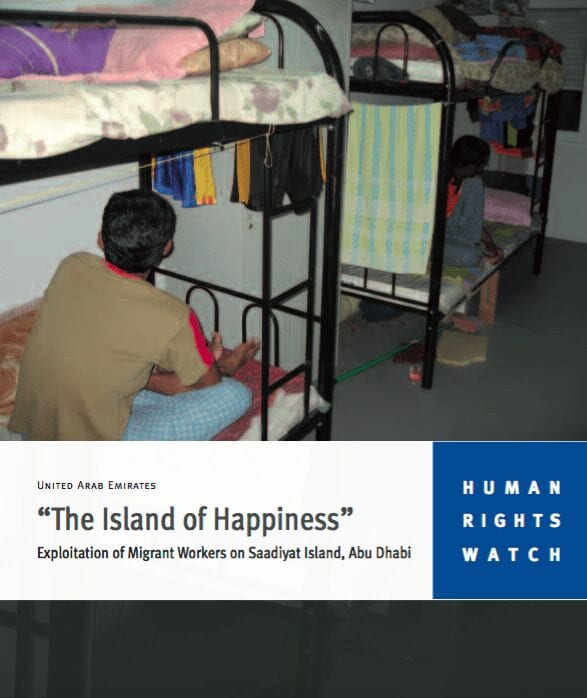
The Island of Happiness: Exploitation of Migrant Workers on Saadiyat Island, Abu Dhabi
EXCERPT FROM SUMMARY:
“Saadiyat Island, in the Arabian Gulf, lies 500 meters off the coast of Abu Dhabi, the oil-rich capital of the United Arab Emirates. Today, the triangular, 27 square kilometer island consists primarily of sand and mangrove swamp. Within a decade, if a $22 to 27 billion development plan goes according to schedule, the island will host six cultural institutions, including outposts of the Guggenheim and Louvre museums; a museum dedicated to Abu Dhabi’s heritage and the UAE’s first president, Sheikh Zayed; a Maritime Museum; a performing arts center; and a campus of New York University. It will also include two golf courses, expensive private residences, a marina, and 29 hotels. The first of these institutions scheduled to begin construction is the Louvre, which will break ground in May 2009, with the Guggenheim and the Sheikh Zayed museum to follow. The government of Abu Dhabi established the Tourism Development & Investment Company (TDIC) to develop Jazeera al-Saadiyat – “the Island of Happiness” – into an exclusive international tourist attraction. But many of the migrant workers currently building Saadiyat Island have little happiness in their lives or work: they continue to face the same types of exploitation and abuse Human Rights Watch documented in the UAE in our 2006 report, Building Towers, Cheating Workers. The UAE government has addressed a number of issues affecting the lives of migrant workers, including attempts to improve housing conditions and access to health care. And TDIC also has sought to ensure that its contractors address some of these issues as well, by contractually requiring employers to affirm that they do not engage in or support the use of forced labor, require employees to surrender passports, or withhold wages from employees. Despite these affirmations, abuses continue, as the reforms have failed to address the fundamental sources of worker exploitation – employee-paid recruiting fees; visas controlled by employers; very low wages often far below what was promised workers in their home countries; and restrictions on organizing and no real access to legal remedies. As a result, the abuse of workers remains commonplace.”
